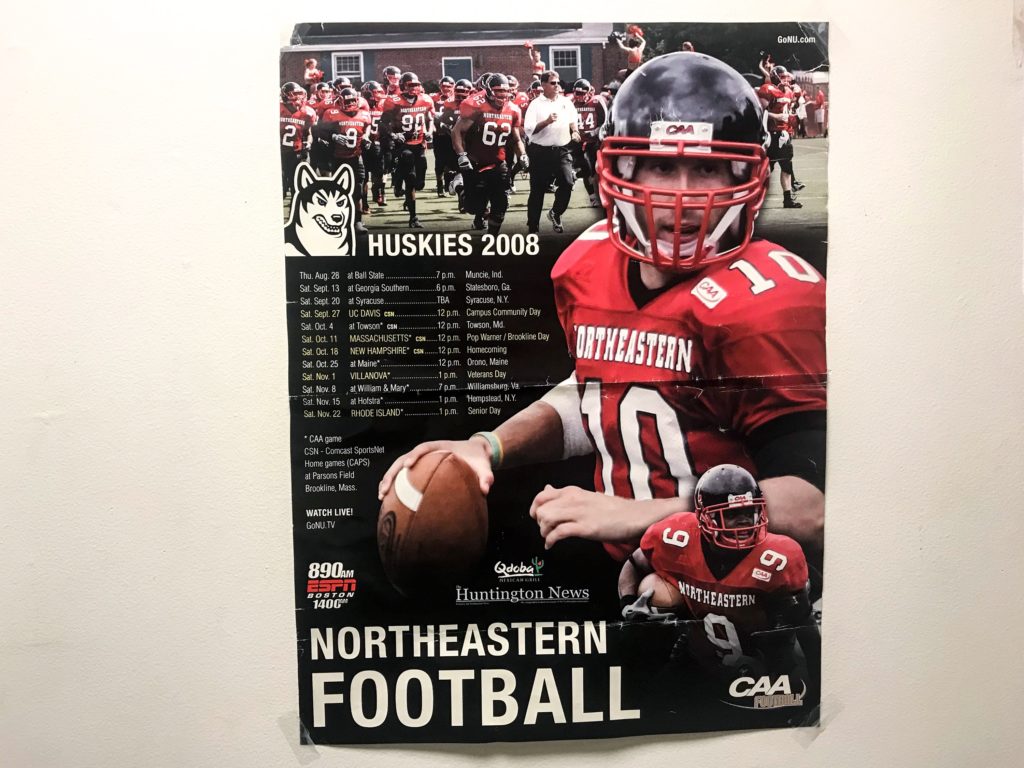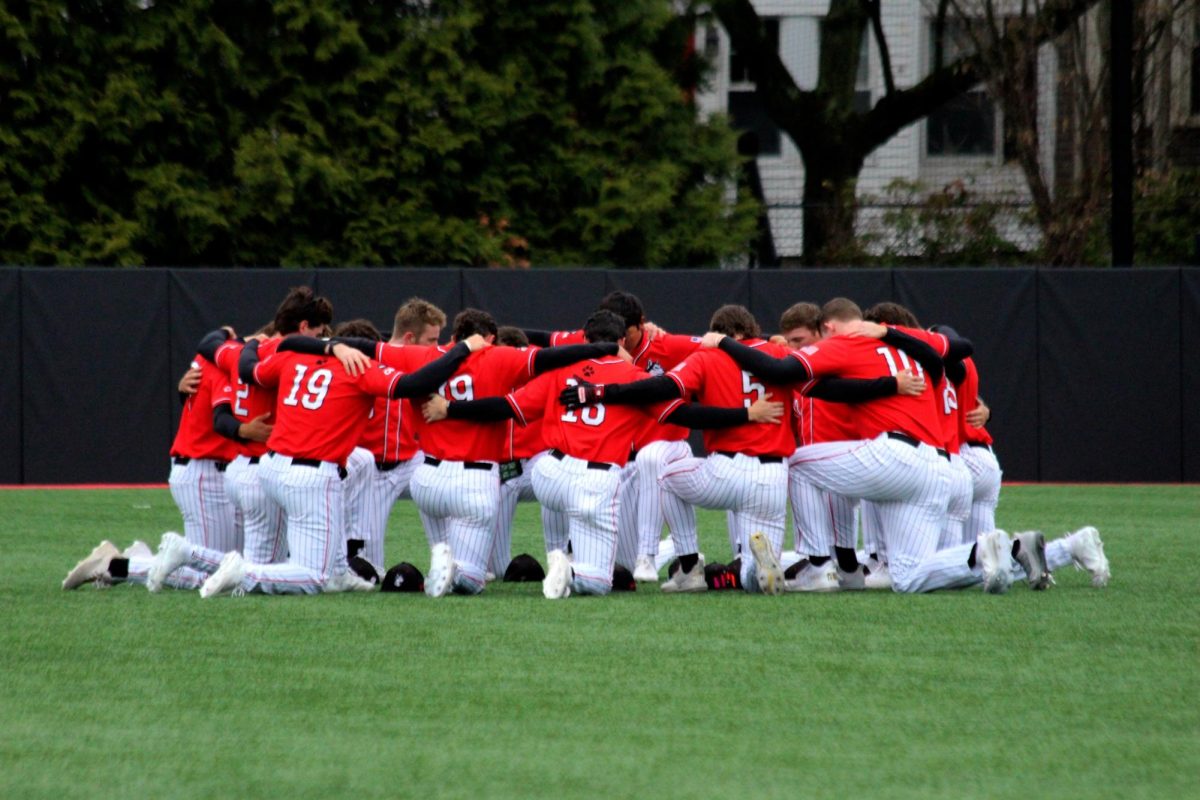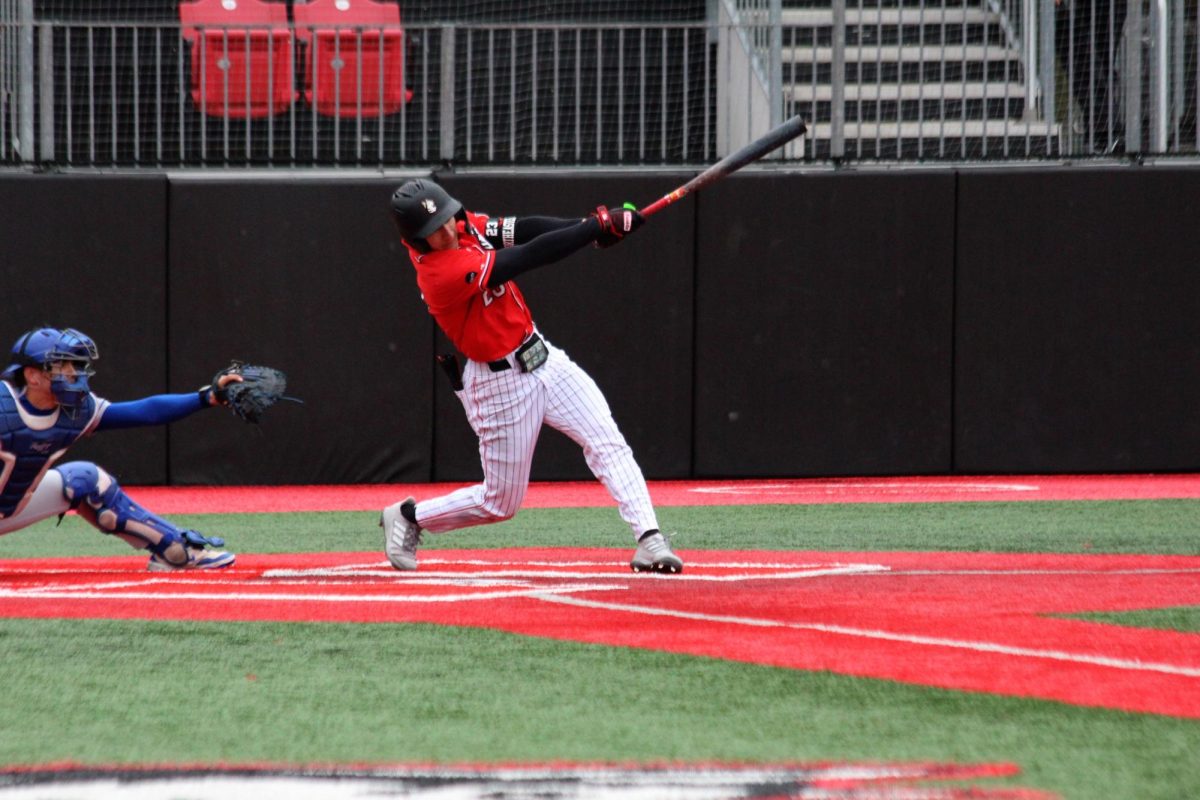
By Thomas Herron, news correspondent
When Northeastern’s administration cut the university’s football program in 2009, it was the right thing to do. Athletic Director Peter Roby, who was instrumental in cutting the program, has done an outstanding job in bettering our athletic programs and keeping the focus on the student half of the student-athlete equation. He has done an immense amount of good for the school and its athletic programs.
Despite the controversy surrounding the decision to cut football, it was one of the best moves the athletic administration has made. The cut allowed the school to reallocate this money into bettering other athletic programs through the the redistribution of scholarship money, refinancing the general financial aid pool and benefitting academic programs.
The results speak for themselves. Northeastern’s ranking has soared from the 96th national university at the time football was cut in 2009, to number 40 in 2018, an astonishing 56-place jump. The academic status of the school has surpassed all expectations from the time the program was axed. The campus itself has expanded through leasing and building new properties. The co-op program is regarded as one of the best in the country today, and of course there’s always the added attraction of being centrally located in Boston.
The university currently has great appeal as a result of the jaw-dropping transformation it has gone through. The question now is, what else can be done?
The best thing Northeastern can do to build on the progress it has made already is simply by making the student experience on campus more attractive. And to do that, Northeastern should re-establish its football team.
Too often have I heard friends and acquaintances say something along the lines of, “I didn’t apply to Northeastern because I want to go to a college with a football team.” This should be a problem in the eyes of the administration. Anything that deters possible applicants from applying — or worse, accepted students from choosing Northeastern — is a major issue. From a ranking-based standpoint, bringing football back would benefit the university in terms of increasing applications and would benefit the student body in terms of enhancing students’ experiences.
The problems that the football program faced in 2009 are still relevant today. It is, without a doubt, extremely hard to maintain a successful football program in a major city. That’s why so many colleges and universities located in major cities have cut their programs as well. Still, it is far from impossible. Look at places like University of California, Los Angeles, University of Central Florida in Orlando, University of Miami and University of Houston. Yes, the campuses are bigger, but their successes prove that teams located in major cities can still be competitive.
It’s no secret that funds could have been better allocated toward certain programs in the past, and the $20 million it would have cost to build a new stadium for a losing football team just wasn’t worth it, to be blatant.
But the fiscal argument that worked so well in the past fails today. For example, the Interdisciplinary Science and Engineering Complex is an amazing building and it does contribute to the appeal of the university and its betterment. But the cost to build facilities necessary to sustain a successful Division I athletic program pales in comparison to the $225 million that it cost to build ISEC.
The school has the money to spend, and that money should be spent on the betterment of our university. I also doubt that there is a shortage of alumni who would donate money to go toward building a new stadium and bettering our athletic facilities.
The reinstatement of football would also increase the number of student-athletes on campus, something the student body could only benefit from. Northeastern is a Division I program that excels in what we do, but the feeling among campus is simply that we aren’t a huge sports school. Bringing football back would change this, and change it fast, by increasing the number of student-athletes and the number of major sports that we offer. Although attendance at football games wasn’t the best since Parsons field is about a twenty minute walk from campus. That problem would be easily remedied with a new and more appealing stadium closer to campus.
Yes, in 2009 it was harder for Northeastern to draw top recruits, but the pitch to recruits would be completely different now than it was nine years ago. Attracting talented athletes is no problem for the athletic department currently, considering its status as a Division I program and the academic ranking alone. Throw co-op in on that pitch and many athletes would seriously consider playing here.
There would undoubtedly be a period of time during rebuilding when the program would probably not be the most competitive, but the way Northeastern Athletics is operated currently, I have faith it would not take long to figure itself out.
In 2009, cutting football was the best possible decision for the University. The results are unquestionable in terms of increase in ranking and university expansion. But these improvements are also the reason it makes so much sense to reinstate the program. That decision (among others) rocketed Northeastern in the right direction and spurred the growth we’ve seen in the last nine years. In 2018, there would be no better decision for the continuation of this growth than to reinstate Northeastern football.














